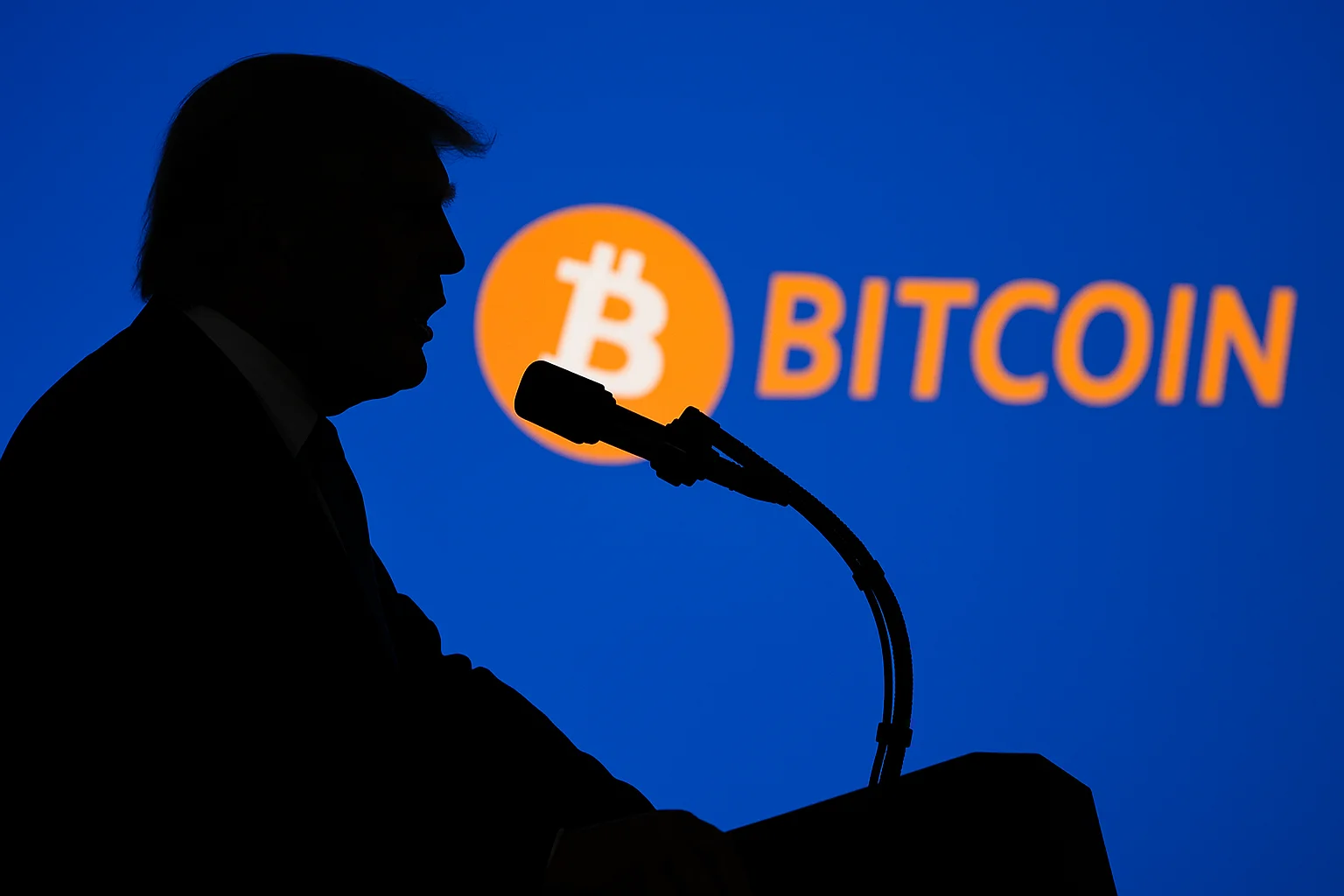News
Politics News
Politics News
Browse all Politics related articles and news. The latest news, analysis, and insights on Politics.
US November Employment Exceeds Expectations, Unemployment Rises: How Did Bitcoin React?
The latest data on the US labor market indicates that the slowdown in the economy is becoming more pronounced. In November, non-farm employment increased by 64,000 people, while the unemployment rate rose to 4.6%, reaching its highest level in four years. The data had been delayed due to the government shutdown in Washington, and this delay revealed a weaker picture of the labor market than expected.According to the report released Tuesday by the US Bureau of Labor Statistics (BLS), the increase in non-farm employment in November was slightly above economists' expectations. Market expectations were for an increase of 50,000 people. However, although the headline figure exceeded expectations, the rise in the unemployment rate and revisions to the previous month indicate a weakening overall trend in the labor market.With the November data, the unemployment rate rose to 4.6%. This rate exceeded both the market expectation of 4.4% and the 4.4% recorded in September. Thus, the unemployment rate in the US reached its highest level in almost four years. Rising unemployment has reinforced concerns that demand in the labor market is gradually cooling.Employment data for October presented an even more striking picture. According to the data, employment decreased by 105,000 people in October. In September, employment increased by 119,000 people. This sharp drop in October is largely attributed to the US federal government shutdown. The temporary absence of public employees from their jobs and disruptions to some data collection processes put downward pressure on the figures.When the November and October data are considered together, it is seen that the US labor market has shown a more fragile appearance than expected in recent months. The slowdown in the pace of employment growth and the rise in the unemployment rate indicate that signals of a cooling in the economy are strengthening.How did Bitcoin move?Following the release of the data, limited reactions were observed in financial markets. Bitcoin gave back some of the small gains it had recorded before the report, briefly falling to the $87,000 level. US stock futures indices, on the other hand, shifted slightly from positive to slightly negative. On the other hand, the 10-year US Treasury yield remained flat at 4.17 percent. Prior to the employment data, markets were pricing in a 75 percent probability that the Federal Reserve (Fed) would keep interest rates unchanged at its January meeting. Following the release of the data, there was no significant change in these expectations. This indicates that investors do not expect a sudden shift in the Fed's monetary policy in the short term. The overall picture shows that the US economy has not entered a strong contraction, but there has been a significant loss of momentum in the labor market. New employment and inflation data to be released in the coming months will continue to be critical for expectations regarding the Fed's policy steps.

Fed Decision Triggers Volatility in Crypto Market: Bitcoin and Altcoins Shaken
The crypto market entered a period of uncertainty following the Federal Reserve's announcement of a quarter-point interest rate cut. Initially welcomed, the decision was quickly digested due to internal committee disagreements and the lack of clear indications of further easing; risk appetite weakened, and prices turned down again. Futures data, however, shows that traders have already shifted to new expectations, pricing in a near 40% probability of a cut by March. This situation has carried the market into the final weeks of the year on an uncertain footing. At the FOMC meeting, the federal funds range was lowered to 3.5-3.75. The vote passed 9-3; two regional presidents opposed the cut, while Fed Governor Stephen Miran advocated for a more aggressive half-point reduction. The emphasis on "carefully evaluating incoming data" was closely watched, as it is language used in the past during periods of slowing interest rate cut cycles. This tone dampened hopes for further easing. Bitcoin experienced sharp fluctuations between $93,200 and $91,700 after the decision; Ethereum also exhibited similar volatility in the $3,340-$3,440 range. Solana, XRP, and BNB were also caught in the same fluctuations. The Fed's $40 billion Treasury bond purchases, starting on December 12th, have brought the "quantitative easing" debate back to the forefront. A similar program in 2019 was implemented for reserve management purposes; today, it is being discussed that its effect may be limited but potentially directional. What do the experts say?Analyst comments reflect the confusion in the market. According to the CryptoQuant team, BTC has the potential to break through the $99,000 and $102,000 resistance levels and head towards $112,000 if the Fed becomes more clearly "dovish." However, this requires not only further rate cuts but also a more consistent guide from the Fed regarding its inflation path until 2026. Nic Puckrin of Coin Bureau stated that the decision being less hawkish than expected gave the market a brief respite, but the fact that only one rate cut was predicted dampened this relief. Another view came from David Hernandez of 21Shares; according to Hernandez, the rate cut itself is the first sign that could increase risk appetite. "Today's rate cut is a lifeline thrown to sinking Bitcoin," he says, recalling the historical tendency of cheaper liquidity to flow into crypto. However, the price action in the market did not immediately confirm Hernandez's optimism. Bitcoin retreated to the $90,000 threshold the morning after the decision. After a brief jump above $94,500 on Tuesday, BTC returned to the middle band after failing to break this resistance. Over $514 million in leveraged positions were liquidated in the last 24 hours; losses from long positions were approximately three times greater than those from short positions.
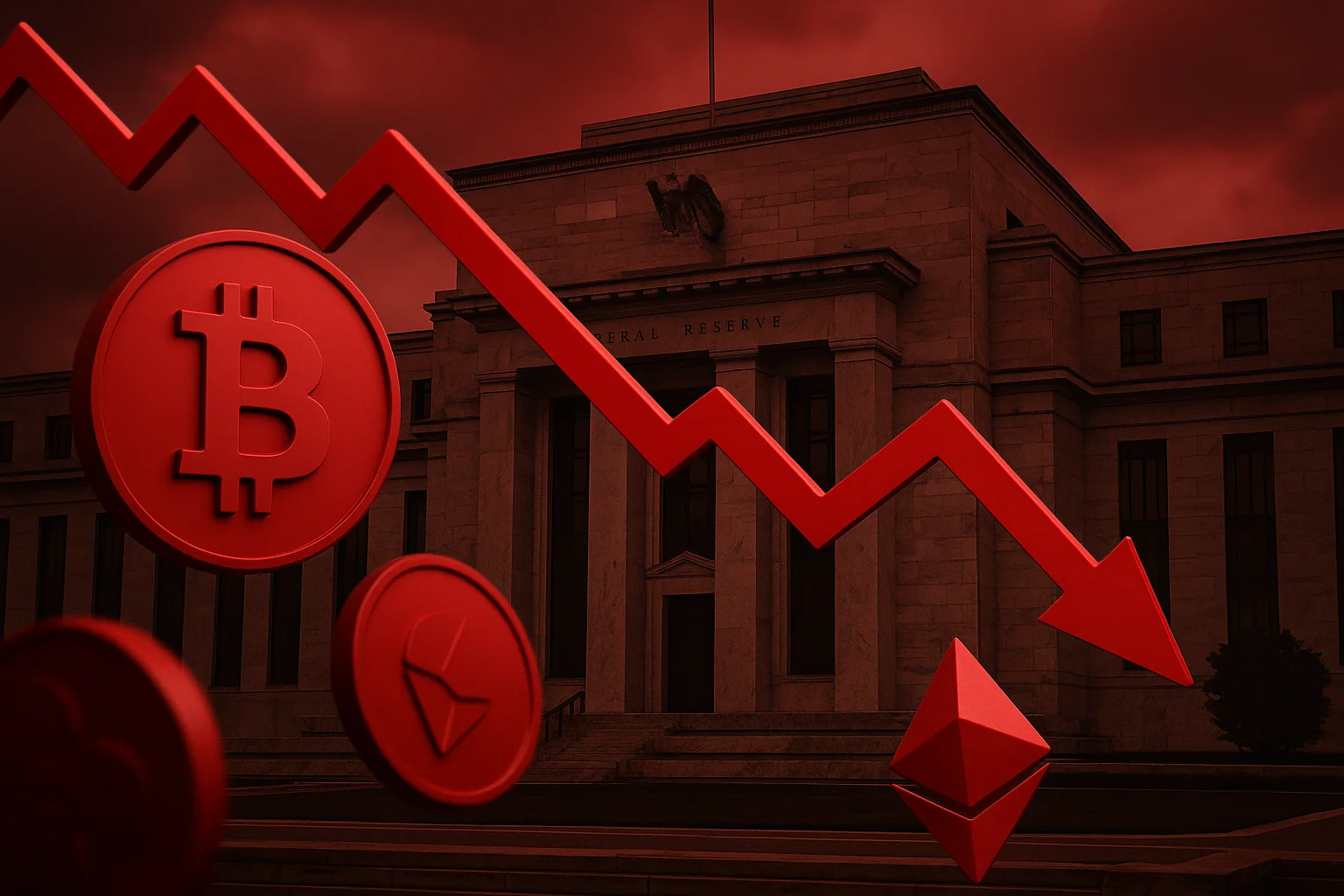
Crypto Markets Also Await: When Will the Fed Interest Rate Decision Be Announced?
Global markets are counting down the hours to the December 10th FOMC meeting, with the general expectation that the Fed will cut its policy rate by 25 basis points. However, investors' main interest has shifted from the decision itself to the signals Chairman Jerome Powell will give regarding 2026. Topics such as liquidity regulations, balance sheet management, and a possible leadership change are seen as key factors that will determine the long-term direction of US monetary policy. The Federal Reserve's interest rate decision will be announced at 10:00 PM tonight. Fed Chairman Jerome Powell will deliver a speech at 10:30 PM. The Fed meeting is eagerly awaitedData released before this meeting supports expectations. The September PCE report showing annual inflation rising to 2.8%, while still above the target, reinforced the interpretation that the Fed is leaving room for gradual easing steps. Price pressures, which have accelerated since the fall, indicate the strongest increase seen since the spring of 2024. UBS Strategist Jonathan Pink says there is broad support for a rate cut within the committee, but emphasizes that a significant policy revision should not be expected. According to Pink, the main focus of the meeting will be how Powell frames the risks and the tone he uses regarding long-term expectations. Pink forecasts two rate cuts for 2025, while reminding that the 2026 discussions will be shaped by the approach of the new Fed chairman. On the liquidity side, more details may emerge. Pink suggests that the Fed may purchase between $40-60 billion worth of Treasury bonds monthly to stabilize repo markets and manage overall liquidity. This is seen as a sign of a period where balance sheet policy will be re-discussed.How will the crypto market be affected?In the crypto market, the prevailing view is that rate cuts will not have an immediate impact. Analyst LA MAN says that monetary policy easing alone will not improve the weak market structure. According to him, unless the technical structure strengthens, rate cuts will have a limited effect. He adds that a large-scale asset purchase program (QE) could change the direction, but the timing is uncertain. Denny Research President Ed Ardenni sees the current inflationary pressures as temporary. Ardenni believes that tariffs have led to short-term price increases, but the overall trend is towards cooling. While he argues that the economy does not need interest rate cuts, he also acknowledges that the market's expectation set is putting significant pressure on the Fed. According to him, easing measures could trigger a new period of volatility in stocks. He also states that Bitcoin is strongly affected by this policy, and its value is determined not only by its identity as a "store of value" but also by the interaction of regulation and monetary policy. In the crypto outlook extending to 2026, interest rates may not be the only determining factor. Analyst Leon Waidmann says that a low interest rate environment will encourage investors to take on more risks, thus supporting crypto activities. However, he notes that as traditional finance returns fall, stablecoin and on-chain dollar returns will also decline, and this will be felt more clearly in 2026. Tokenization, expanding stablecoin adoption, and potential regulatory steps (such as the Clarity Act) are listed among the long-term growth dynamics. At the time of writing, Bitcoin, Ethereum, and other major cryptocurrencies are trading slightly higher in a period of 24 hours.

Bitcoin Starts Fed Week Above $91,000: What Are the Expectations?
Bitcoin opened the new week above $91,300, with global markets focused on the US Federal Reserve. Asian stock markets opened positively, and investors are awaiting the Fed's interest rate decision on Wednesday. A 25 basis point rate cut has largely been priced in, but cautious messages from Fed Chair Jerome Powell are expected to dampen risk appetite.In Asia, technology stocks led a limited rally; the MSCI Asia index rose approximately 0.2 percent. US futures retreated slightly, while the dollar index showed a weaker tone. This trend also shaped the direction of crypto markets.Bitcoin Faces Resistance as It Approaches $94,000Bitcoin continued last week's recovery, rising 2 percent in the last 24 hours, but is facing resistance as it approaches the $94,000 region. Analysts indicate that if the current momentum holds, the price could move towards the $98,000-$100,000 range. Ethereum saw a 3 percent daily increase to $3,135. While the last week's performance exceeded 10 percent, there are comments that Ethereum has strengthened technically after the development team completed the Fusaka update. BNB, Solana, stETH, and XRP also saw slight increases. In contrast, Cardano was the weakest link today, falling 1.4 percent.Market sentiment remains fragileDespite the recovery in the crypto market, overall sentiment remains fragile. CryptoQuant's Bull Score index falling to zero indicates that the market is still experiencing the effects of a bear cycle. CryptoQuant CEO Ki Young Ju stated that unless new liquidity enters the market, the upward trend may weaken, and the $55,000-$70,000 range is a potential price target for the next year. K33 Research, on the other hand, highlights some factors that could be supportive in the medium term; it is noted that 401(k) regulation changes expected at the beginning of 2026 could generate corporate retirement flows into Bitcoin.Fed Week: Expectations are strong, tone is cautiousIn global markets, the Fed's upcoming interest rate decision remains the main driver. Recent economic data, particularly the consistent monthly increase in the core personal consumption expenditures price index, has strengthened the likelihood of an interest rate cut. Money markets are pricing in an 88% probability that the Fed will cut by 25 basis points this week. Improved investor confidence data and a decline in inflation expectations also support this expectation.Still, analysts emphasize that a cautious tone may prevail in the Fed's forward-looking communications, which could increase volatility in risky assets. The mixed start to the week in global stock markets also reflects the impact of these expectations. Bitcoin's price behavior in recent months is reminiscent of the corrections seen in past cycles in 2013, 2017, and 2021. Analyst Alex Kuptsikevich notes that the market has already experienced a sharp pullback spanning two months, and volatility may increase again as clarity on monetary policy is provided.
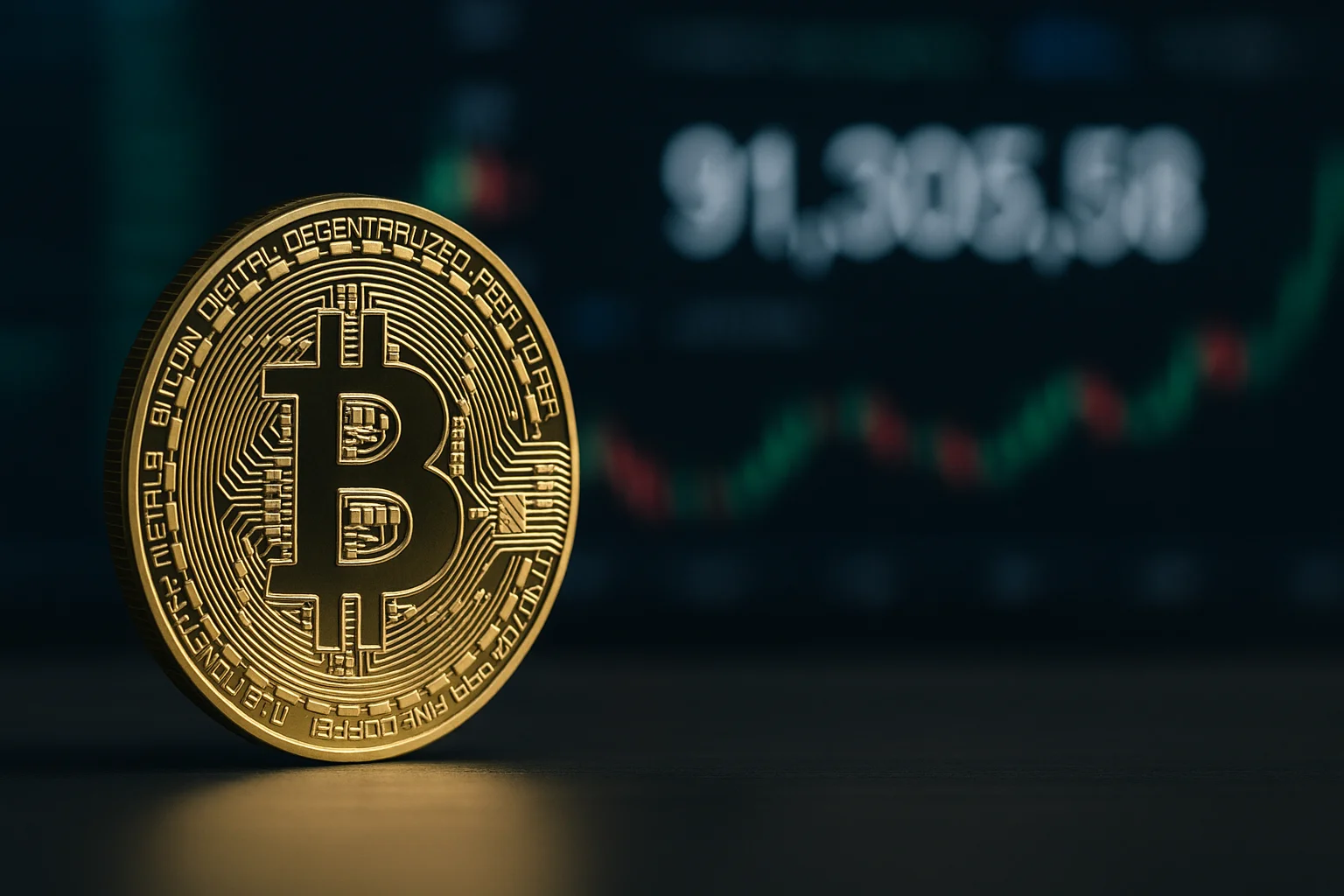
All Eyes on Critical US Inflation Data: What's in Store for Cryptocurrencies?
Today's release of the core personal consumption expenditures price index (core PCE) data in the US has become the most critical headline that will determine the weekly direction of the crypto market. A higher-than-expected increase in the core PCE, the Fed's most important inflation indicator, could strengthen the case of members advocating for tight monetary policy and dampen risk appetite in the markets. Conversely, a softer data release could push bond yields lower, supporting a short-term recovery in Bitcoin and other major crypto assets.All Eyes on the PCEAccording to market forecasts, core PCE is expected to have increased by 2.9% year-over-year in September. This rate represents the 55th consecutive month above the Fed's 2% target. This persistent inflation outlook is reinforcing the "hawkish" wing of the committee's call for slower rate cuts. However, despite all the pressure, markets are almost certainly pricing in a 25 basis point Fed rate cut at the December 10th meeting.On the volatility front, there's a surprising calm. According to Volmex data, Bitcoin's one-day implied volatility index (BVIV) is trading at around 36%. This rate suggests the price could move within a normal range of approximately 1.88% over the next 24 hours. In other words, markets are not significantly pricing in panic ahead of critical data.Analysts attribute this to the expectation that the Fed will initiate a rate cut regardless of the data results. The CME FedWatch Tool also supports this; the possibility of a 25bp rate cut appears to be "completed" pricing.The range observed on Bitcoin is also noteworthy. The price has been stuck between the $92,000 and $94,000 range for the past two days. According to Nexo analyst Iliya Kalchev, a softer PCE data could push the 10-year Treasury yield below 4%, potentially allowing BTC to attempt another break above $94,000. In the opposite scenario, where the data exceeds expectations, the market could return to a sideways-to-conservative mode until the Fed's meeting to clarify its roadmap. At the time of writing, the Bitcoin price is struggling to hold above $92,000. ING analysts, however, warn that a potential interest rate cut may not be permanent. They believe any short-term pullbacks in interest rates could quickly reverse if the data flow doesn't signal a sustained easing.Volatility is slightly higher on the altcoin front. Ether's one-day implied volatility has risen to 57.23%, indicating a price movement of approximately 3%. For Solana, this figure is 3.86%, and for XRP, it's 4.3%. This suggests that the PCE data could trigger broader price volatility in altcoins.The crypto market's final trading day of the week is entirely focused on the outcome of this data. In addition to showing the Fed’s short-term policy, the PCE figure is seen as the key data that will determine the tight squeeze that Bitcoin is trying to break out of and the short-term price channels in altcoins.
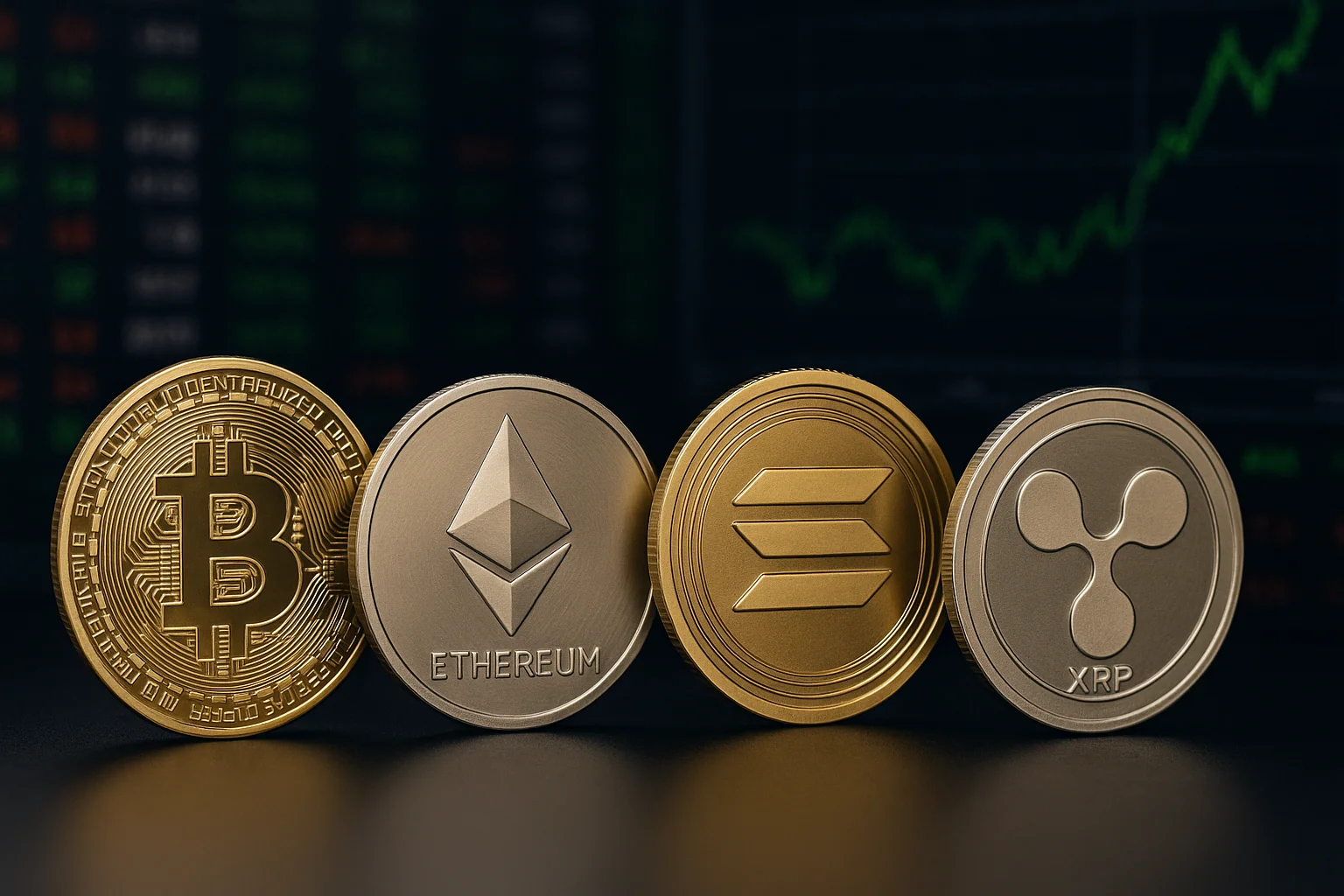
Binance and CZ Face October 7 Lawsuit: ‘They Were Turned Away for Years
Binance and its co-founder, Changpeng Zhao, are attempting to emerge from the shadow of past accusations, but this time, they face a much more serious lawsuit. More than 300 people, mostly victims and their families of the October 7, 2023, attack, filed in North Dakota, accuse the world's largest crypto exchange and its executives of "knowingly supporting terrorist organizations."The lawsuit's language is extremely harsh. The documents allege that Binance and Zhao "systematically assisted organizations such as Hamas, the Iranian Revolutionary Guard Corps (IRGC), Hezbollah, and PIJ over the years." This assistance allegedly enabled the concealment and transfer of hundreds of millions of dollars in crypto assets, and these activities strengthened the groundwork for the October 7 attacks.The documents indicate that Hamas conducted long-term preparations prior to the attacks. Tunnels, weapons, communication networks… According to the file, a significant portion of the organization's crypto needs were met through Binance throughout this period. Prosecutors argue that this was not a "mistake," but the result of deliberate choices on the part of the exchange.The lawsuit alleges that Binance was deliberately positioned as an attractive platform for criminal organizations. It states that even CZ's statements years ago, "Binance's headquarters is wherever I am," served as a "message" to money launderers. The same document also highlights an internal message from former compliance manager Samuel Lin: "Our users come here for crime." A team member humorously responded, "Are you having trouble laundering drug money? Come to Binance, we're waiting for you."Hamas's 2019 "Open a Binance Account" callThe lawsuit notes that in 2019, donations to Hamas's official website were instructed to open a Binance account. Moreover, it is alleged that independent analysts reported that certain wallets were linked to Hamas, but Binance protected these accounts rather than intervening.More importantly, the petition alleges that these practices are still ongoing. It alleges that even after Binance's $4.3 billion settlement with the US Department of Justice in 2023, some related wallets continued to conduct transactions. Blockchain analysis even indicates that over $50 million in suspicious transfers occurred after this date.Changpeng Zhao is no longer CEO, but the plaintiffs claim he retains influence over the company and continues to influence critical decisions. The documents also allege that some meeting minutes were not kept and certain records were deleted at Zhao's direction.The plaintiffs are seeking both monetary damages and a trial. Binance, however, is currently silent. In similar cases, the company has previously maintained that it complies with international sanctions and that terrorist organizations do not use crypto on a large scale.
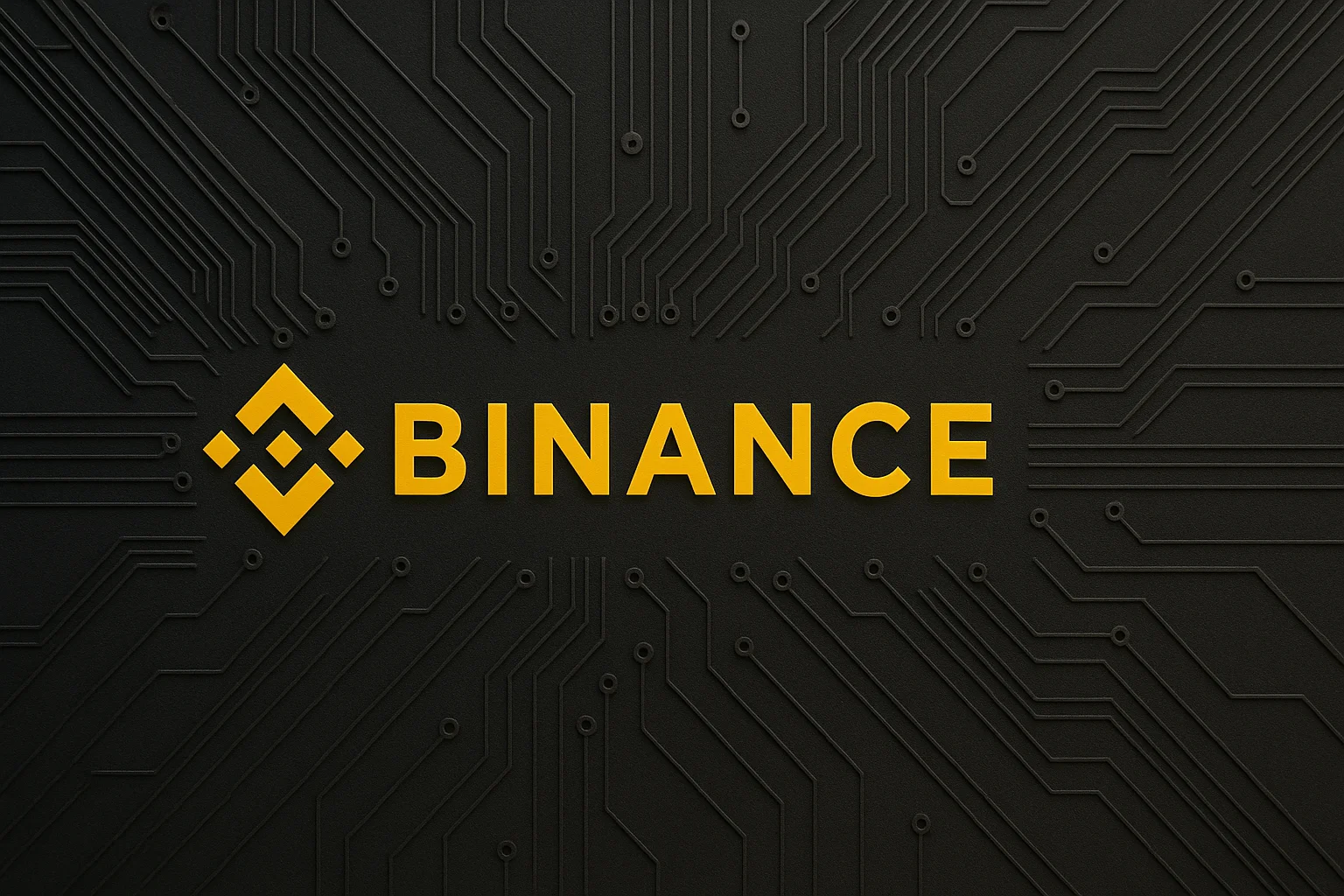
Trump-Musk Project DOGE Quietly Shut Down
The Department of Government Efficiency (DOGE), established with great fanfare during the second term of the Trump administration in the US and generating widespread buzz in both political and technological circles, was quietly shut down. The department, which launched in January, was supposed to operate until July 2026; however, it was confirmed that it had ceased operations entirely eight months before the planned deadline. Thus, DOGE, which had been brought to the forefront by the high-profile promotions of Trump and Elon Musk, quickly vanished into obscurity after a rapid rise.What was DOGE's purpose?DOGE, at its inception, was touted as "reducing government spending, increasing efficiency, and eliminating unnecessary regulations." A few days after winning the election, Trump declared the department a cornerstone of his administration, while Musk frequently posted in support of DOGE on social media. A Dogecoin logo even appeared on the department's website for a time, sparking a brief price surge in the crypto market. This public confusion fueled misperceptions that DOGE was linked to Dogecoin. DOGE was introduced in February 2025 However, the department's shine was short-lived. The signs began to become clear as relations between Musk and Trump deteriorated. Musk distanced himself from Washington during the first half of the year; in May, he confirmed his complete severance of ties with DOGE. His failure to make a single statement about DOGE since then was among the early signs that the process was effectively over. During this hiatus, the department's activities slowed, promised savings figures couldn't be verified, and internal accountability processes became unclear.By the fall, Office of Personnel Management Director Scott Kupor declared that DOGE "no longer exists as a centralized entity." Thus, the unit's operations were completely halted, and its authority was dispersed to other federal agencies. This effectively ensured that DOGE, while still legally defined, had practically disappeared.With DOGE's closure, a significant portion of its staff was shifted to federal agencies. Entrepreneur Joe Gebbia took over as head of the National Design Studio, which was supposed to develop the government's digital design standards. Amy Gleason was appointed as a consultant to the Department of Health and Human Services. At the same department, Zachary Terrell became technology director, while Rachel Riley moved to the Office of Naval Research. These transitions demonstrate that, despite DOGE's closure, its staff were quickly integrated into the system.The department's short lifespan also opened the door to legal disputes. A multi-state lawsuit alleged that DOGE personnel were given "excessively broad" access to federal payments systems within the Treasury. These systems handle critical funding streams such as Social Security, veterans' benefits, and Medicaid reimbursements. The allegations, coupled with Musk's public statements advocating for cuts to certain social spending, further fueled the debate.DOGE's closure also sparked mixed reactions in the markets. Some analysts noted that the potential for cuts to federal programs poses a risk to contractors. Within the crypto community, DOGE's closure has rekindled old debates about Dogecoin; the project's name, inevitably similar to a meme coin, has led to increased social media engagement.Despite this, the White House appears to have maintained its agenda of reducing regulations and bureaucratic reform. AI-powered regulatory sweeps are still ongoing, and Musk's reappearances in Washington are raising questions about these policies.

Fed Official's "Near-Term" Message Sparks Market: Bitcoin Below $84,000
Remarks by New York Fed President John Williams, a senior official at the US Federal Reserve, abruptly changed the market sentiment on Friday. While Williams acknowledged that inflationary progress has "temporarily stalled," he hinted that the Fed may cut interest rates in the near future. While this shift in tone has somewhat restored investors' risk appetite, the selling pressure on Bitcoin has not completely subsided.The cryptocurrency fluctuated sharply between $83,000 and $84,000 during the day, with a 24-hour decline of 8.9%. While the BTC/USD pair showed brief recoveries, the chart reveals that the overall downward trend remains evident. Williams' speech consisted of remarks prepared for an event at the Central Bank of Chile. The renowned economist stated that they estimate the current inflation rate to be approximately 2.75% and emphasized the need to return to the Fed's long-term target of 2% in a "sustainable" manner. However, his statement that the tariffs had a temporary impact on prices and were not expected to translate into permanent inflation drew attention in the market."I believe monetary policy is still relatively restrictive. Therefore, there is still room for some adjustments to the target interest rate range in the near term," Williams said, directly impacting expectations for the Fed's December meeting.Interest Rate Change Expectations for DecemberActivity in derivatives markets increased following these announcements. Traders' positions expecting a December rate cut rose rapidly, pushing the probability above 70%. However, disagreements within the Fed remain evident. According to recent statements, some policymakers are not open to a rate cut until there is clearer evidence that inflation will fall to the 2% target.Williams, however, takes a more "soft" line amid this debate. He states that the labor market is no longer as tight as it was during the pandemic, and that the rise of the unemployment rate to 4.4% is not a major alarm bell for the economy. He emphasizes the importance of achieving the Fed's primary goal of price stability while simultaneously avoiding unnecessary risks to its maximum employment target.On the cryptocurrency side, pricing is quite fragile. Volatility in the dollar index and the search for direction in US bond yields continue to put pressure on Bitcoin. The sharp sell-off seen on the chart deepened, particularly during the Asian session. The pullback to $81,000 during the day increased volumes in the spot market and triggered liquidations in leveraged positions.Nevertheless, some analysts say that the possibility of a "near-term" Fed rate cut could be supportive for Bitcoin in the medium term. However, the market is currently trading under the shadow of macro uncertainty and short-term selling pressure.Under current conditions, the $82,000-$81,000 range represents short-term support for BTC, while the $85,000-$87,000 range represents the first strong resistance zone. Volatility is expected to increase further as the Fed approaches its December meeting.

US Launches National Security Investigation into Bitcoin Mining Company Bitmain
A secret investigation conducted by the US Department of Homeland Security (DHS) has placed Bitmain, the world's largest Bitcoin mining maker, at the center of national security debates. Dubbed "Operation Red Sunset," the investigation was launched to investigate whether mining machines manufactured by the China-based company could be used for espionage activities or remotely manipulated to sabotage the US power grid. According to Bloomberg, the investigation was launched months ago and progressed with the coordination of various federal agencies.Bitmain is one of the most influential players in the crypto mining industry; many large-scale farms operating in the US also have the company's devices. Security concerns were sparked last year by an investigation by the New York Times. The newspaper revealed that some Bitcoin mining facilities linked to Chinese investors were operating next to a Microsoft data center supporting the Pentagon and near a nuclear missile base in Wyoming. A significant portion of these facilities were reportedly powered by Bitmain machines. China concerns are mountingA report released in July by the US Senate Intelligence Committee also alleged that Bitmain devices could be manipulated from China and contained "disturbing security vulnerabilities." These allegations further fueled a growing political debate in Washington.According to Bloomberg, teams under "Operation Red Sunset" examined the chips and firmware of Bitmain devices intercepted at US ports. The investigation also ran parallel to interim meetings of the White House National Security Council. Some of the investigations also covered violations of customs duties and import regulations. However, officials have declined to comment on the findings so far.Bitmain has vehemently denied all allegations. In a statement to Bloomberg, the company stated that it fully complies with US law and called the claim that the devices can be remotely controlled "absolutely false." The company also stated that the occasional stoppage of products at ports is a standard Federal Communications Commission inspection and that there is nothing unusual about it. Bitmain also denied allegations in the Senate report alleging ties to the Chinese government.As the investigation resurfaces in Washington, the Trump family's growing influence in the crypto mining industry has further fueled the debate. According to SEC filings, the American Bitcoin initiative, run by Donald Trump's sons in partnership with Hut 8, purchased 16,000 mining devices from Bitmain in August for $314 million. A company spokesperson stated that all devices underwent rigorous security testing and found no vulnerabilities that could allow remote access.Trump has also denied allegations that the federal investigations are politically motivated. However, there are already rumors that increased scrutiny of Chinese-based technology companies in the US will continue, further impacting the Bitcoin mining industry.Meanwhile, the future of the "Operation Red Sunset" investigation remains uncertain. The DHS maintains its policy of not commenting on open files, and Bitmain continues to maintain that the allegations are baseless.

US Report Surprises: How Strong Employment Impacted Cryptos
The delayed employment data released following the historically long government shutdown in the US has created a cautious price in crypto markets. The nonfarm payrolls report, normally released on the first Friday of each month, was released today due to the 43-day-plus shutdown. While the September figures reveal that the economy created jobs above expectations, the rise in the unemployment rate cast a more mixed tone on the data. This picture has reopened discussion about the possibility of a rate cut for the Fed's December meeting.119,000 new jobs announcedAccording to data released by the US Department of Labor, the economy created 119,000 new jobs in September. Market expectations were 53,000. Furthermore, the previous figure of 22,000 was revised downward, not upward, suggesting that summer employment growth was weaker than anticipated. The significant downward revisions to the July and August data suggest that employment momentum has slowed since the summer.However, the picture is not entirely positive. The unemployment rate, at 4.4%, exceeded expectations. Economists expected the data to remain at 4.3%. Despite strong employment growth, this rise in unemployment indicated a more complex labor market outlook than anticipated. Furthermore, due to the government shutdown, October employment data will not be released at all. This further narrows the data set available for investors to analyze as the Fed approaches its final meeting of the year.The market's initial pricing reflects this uncertainty. According to CME FedWatch, the probability of a December interest rate cut has fallen to 31.8% from 100% a month ago. The probability of the Fed holding interest rates steady is priced in at 68.2%. Under normal circumstances, strong employment data would have lifted the dollar index; however, the DXY only saw limited movement, settling at 100.15. This suggests that markets are hesitant to take overly aggressive positions as they attempt to understand the Fed's response.A similar cautious approach prevails in the crypto market. Immediately after the data release, Bitcoin (BTC) traded within a narrow range of around $500, trading at $92,230. Ethereum (ETH) settled around $3,034. Normally, strong employment data can trigger sharper sell-offs in risk assets; however, the limited initial response suggests that crypto investors are trying to absorb macro uncertainties. According to some analysts, the continued resilience of employment could prompt the Fed to act more cautiously at its final meeting of the year. This is a key factor in determining Bitcoin's short-term direction. Meanwhile, the price of gold rose slightly intraday to around $4,080 in the commodity market, which is the source of the data; however, the real volatility will be seen in the crypto market.Investors are now focused on next week's PMI and inflation indicators. These data will provide clues about the Fed's policy stance heading into 2025. Cautious pricing in the crypto market is expected to continue for a short time.

Bitcoin Under Hard Pressure: Fed Minutes Deepen Decline
Bitcoin is under sharp pressure again, and the market landscape appears more complex than in previous corrections. The price fell to $88,600 on Wednesday, a level not seen since April. Compared to the start of the year, BTC is still down approximately 5 percent. The decline coincided with the release of the Federal Reserve's October meeting minutes, the FOMC meeting, and further shaken market sentiment.The minutes reveal that the disagreements among Fed members have reached their most pronounced level this year. One group argues that the economy is softening, signs of a cooling in the labor market are becoming evident, and that more cautious policy is needed. Another, stating that inflation still hasn't sustained its 2% target, believes interest rates should remain steady. The fact that one member calls for a more aggressive 50 basis point cut, while another advocates "no cuts at all," highlights the broad division within the board.This situation was immediately reflected in the market. The probability of a 25 basis point cut on Polymarket in December was 52% before the minutes, but dropped to 30% after the announcement. The market currently assigns an approximately 70% probability to interest rates remaining stable. CME FedWatch data confirms this division.As macro uncertainty rises again, the already fragile Bitcoin structure has been further disrupted. K33 Research analyst Vetle Lunde states that a "dangerous leverage" structure has emerged in the derivatives market. The increase in open interest in futures positions, exceeding 36,000 BTC in the past week, is the largest increase since April 2023. The positive funding rate suggests that most investors are still attempting to buy reactively, in other words, the typical "catch the knife when it falls" behavior is evident in the market. Lunde notes that this structure has generally resulted in deeper declines in previous periods.According to the analyst, a strong bottom could form between $84,000 and $86,000; However, if the sell-off accelerates, a retest of the $74,500 low from April is also possible. The situation is no different for Ethereum; ETH has fallen to around $2,870, falling below $3,000 for the first time since July. XRP, on the other hand, is trading at a significant threshold, approaching $2 again after five months.QCP Capital's assessments also explain the extent of the decline. The company states that the sell-off is not due to a single reason, but rather to weakening liquidity conditions, continued ETF outflows, and a sharp reversal in macroeconomic expectations. In particular, the decline in the probability of an interest rate cut, which was considered a certainty in December, to 50% within the week quickly dampened risk appetite. The liquidation of a $559 million leveraged position in the last 24 hours also demonstrates this effect.QCP emphasizes that while stocks are supported by strong balance sheets and artificial intelligence-focused institutional investments, Bitcoin does not enjoy the same protection. Due to BTC's reliance on liquidity, the impact of ETF outflows is magnified. The institution also notes that labor force data and the LEI indicator, due this week, could inform Fed policy, and therefore volatility is expected to remain high for some time.Bitcoin Price UpdateFollowing this decline, Bitcoin price has returned above $90,000. At the time of writing, it is trading at $91,900, a 0.7 percent increase.
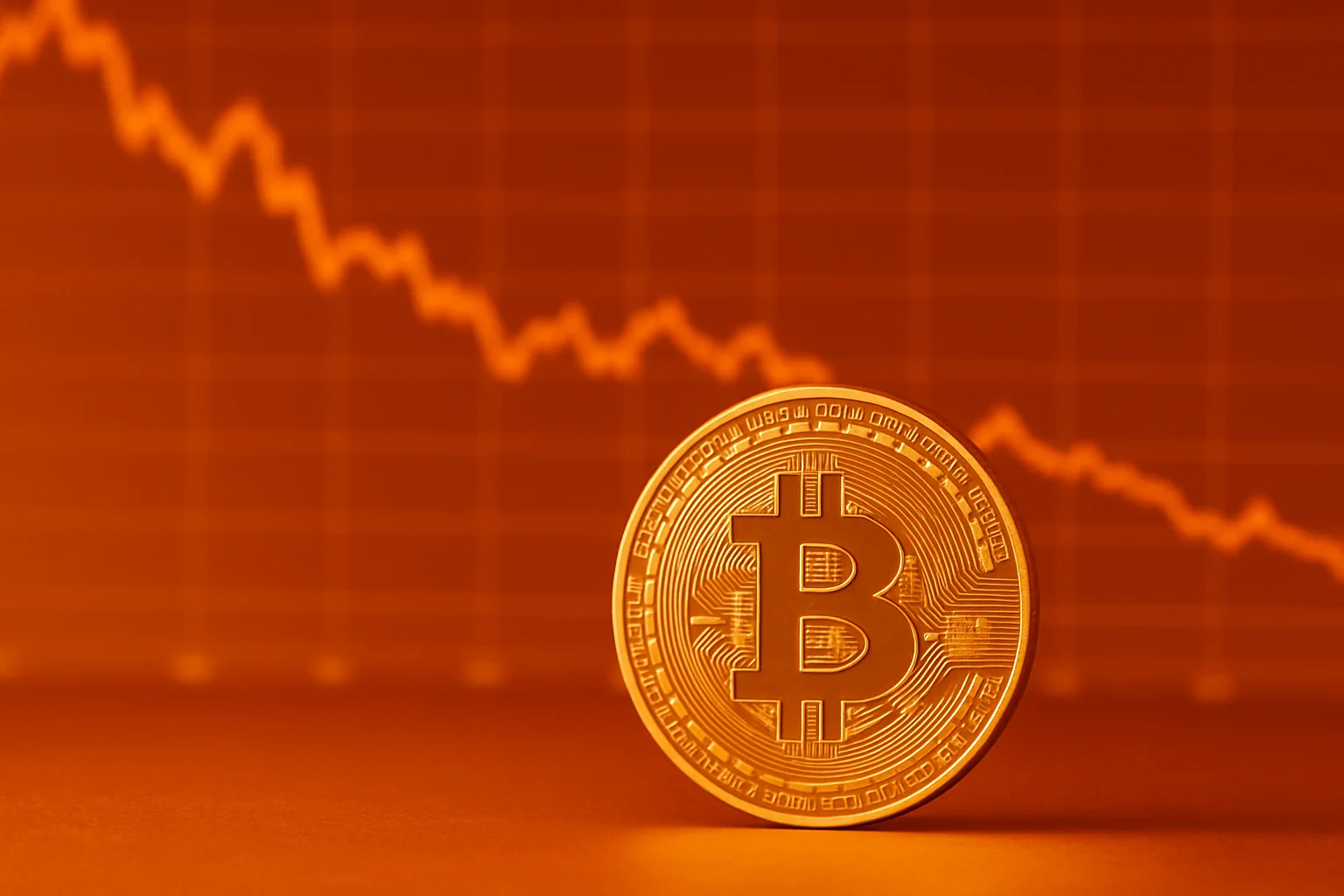
US Inflation Data Not on the Calendar: What's the Situation in the Crypto Market?
For months, leverage, funding, and liquidity appetite were largely adjusted to US inflation data. The CPI calendar, which traders use as a compass every month, remained blank this time despite the government reopening. The Bureau of Labor Statistics (BLS) announced that the report would not be released because data collection for October was completely halted during the government shutdown.What is the impact of the US CPI data on the cryptocurrency market?The October CPI, normally due on November 13th (November 14th in Turkey), was nullified because the shutdown completely interrupted the data collection process. Teams required to be out in the field throughout October were unable to collect price samples. The BLS notes that this may not be accurately reconstructed later. Therefore, the October data may have been completely "down."A White House spokesperson issued a harsh statement arguing that this gap was due to the Democrats' stance. However, beyond the controversy, the lack of data itself was critical for the markets. Because the last completed CPI report covered September and was released on October 24th, delayed by the lockdown. Headline and core inflation were at 3.0 percent year-over-year.The crypto market entered the week with this data gap. Bitcoin and Ethereum started the day without a macro catalyst, which they expected to create volatility. However, the market still saw sharp movements. Bitcoin fell nearly 6 percent during the session; a widespread sell-off occurred in altcoins. Liquidity is weak, open interest is low, and the market is essentially on the defensive against the uncertainty created by the lack of data.What is the impact of the US CPI data on the cryptocurrency market?The lack of CPI data broke the chain established for years between macro and crypto. Normally, a soft inflation data release creates expectations that the Fed will take a looser path; the dollar weakens, bond yields decline, and Bitcoin finds buyers. Conversely, hot data creates a perception of tight policy and suppresses risk appetite. This time, this cycle has been completely suspended. Markets are now set to December 10th. Trading Economics lists this date as the "next release," but the data field is left blank. This appears to be a placeholder on the calendar, not a confirmed data date.This gap raises three different possibilities. The first is that the BLS managed to compile a figure for October using partial samples or modeling. Such a figure would be a data point that the market would approach cautiously due to its low quality. However, if the monthly increase falls to 0.2 percent or less, the dollar could soften, and the cryptocurrency market might see short-term relief. Ethereum and high-beta altcoins could follow traditional behavioral patterns.In the second scenario, the data is in the "sticky" zone, meaning it's in the 0.3-0.4 percent monthly range. This scenario could create a directionless day for both the bond and crypto markets. It wouldn't be surprising if Bitcoin remains flat, altcoins outperform, and funding rates turn negative. The third path is more drastic: If the monthly increase reaches 0.5 percent or more, the Fed is priced in to maintain its tight stance for an extended period. In such a scenario, the dollar strengthens, bond yields rise, and the cryptocurrency side typically experiences daily declines of 3-6 points, high liquidation volumes, and rapid deleveraging cycles.The most unusual possibility is that the October data is completely ignored. If the BLS confirms it cannot fill this gap, markets will be forced to proceed without a true inflation measurement for nearly two months directly until the November data. In this case, crypto becomes a more "macro-filtered" asset class. Instead of sharp movements driven by short-term data, slower liquidity flows, ETF inflows and outflows, and institutional behavioral patterns become prominent.During such periods, the capital risk curve is rarely moved down. Bitcoin remains at the center due to its liquidity depth and the strength of its narrative. Meanwhile, the altcoins, which require speculative momentum, remain under pressure.
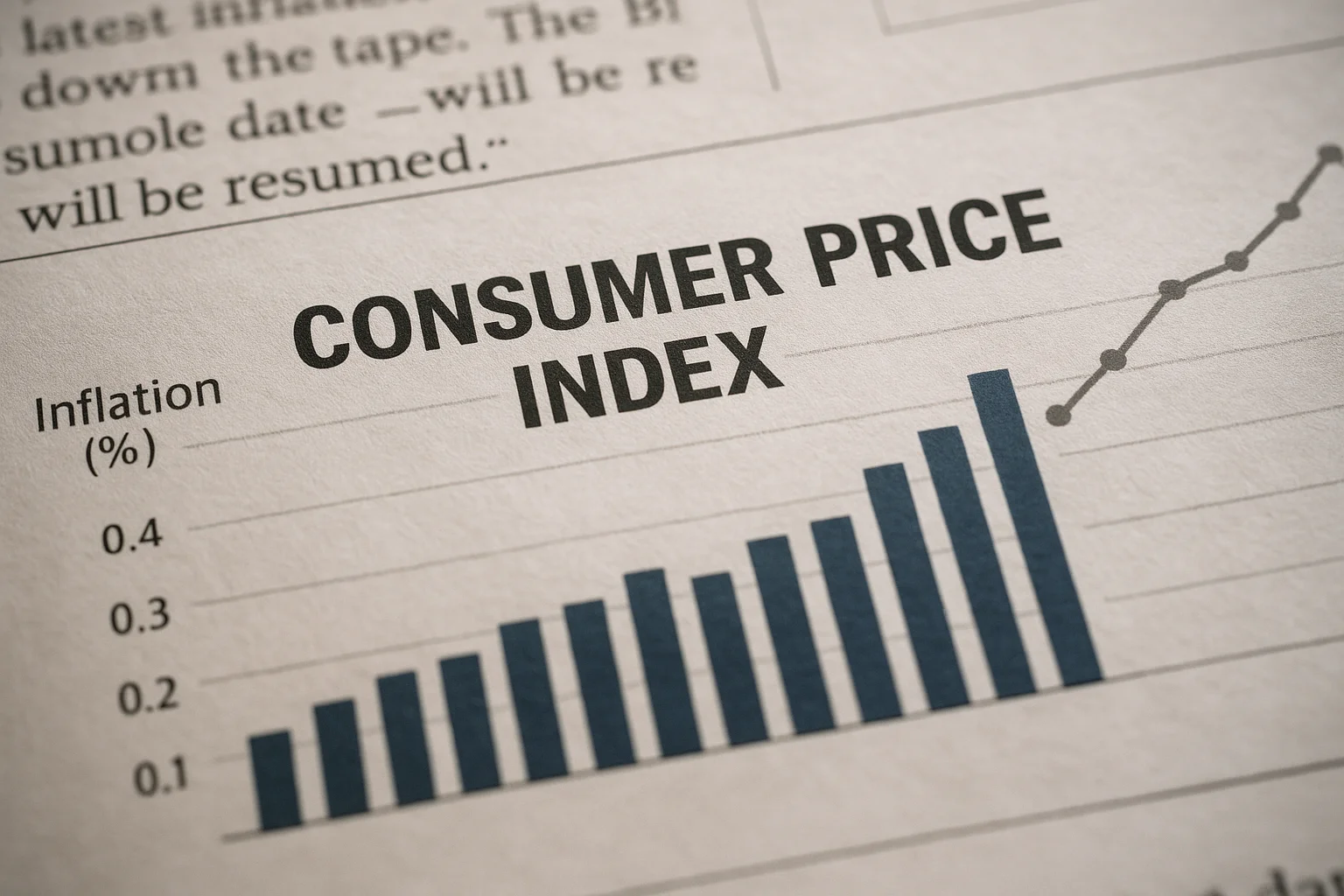
43-Day US Government Shutdown Ends: How Crypto Markets Affected
US President Donald Trump officially ended the longest government shutdown in the country's history by signing the funding bill passed by the House of Representatives on Wednesday. This 43-day process forced federal agencies to operate at nearly half capacity, directly impacting the crypto ecosystem as well as financial markets.The bill, approved by the Senate earlier this week, took effect with Trump's signature after quickly passing the House. The new funding grants the federal government authority to operate until January 30, 2026, meaning both Democrats and Republicans have a window of several months for more comprehensive budget negotiations.One of the key points of the shutdown was healthcare spending. Democrats wanted more funding for this area, while Republicans argued that regulations should be addressed after the bill was signed. Trump stated his openness to compromise on this issue after the signing, saying, "I'm willing to work with both parties. We can do better on healthcare."What's changing on the crypto side?The government reopening means that crucial institutions, especially in the crypto ecosystem, will return to full capacity. The SEC (Securities and Exchange Commission) and the CFTC (Commodity Futures Trading Commission) were operating with limited staff throughout the shutdown. This had caused critical crypto applications to remain on hold. Here's what's expected now:Decision-making processes for spot crypto ETF applications will accelerate again.The CFTC will proceed with the November 19th confirmation hearing of Mike Selig, Trump's favorite for the agency, as planned.The Treasury Department will continue to review the stablecoin-focused GENIUS Act feedback, which includes feedback collected between early October and early November.All of these developments are clearly critical for the crypto markets in the medium term. Both the progress of the ETF filings and the clarification of the stablecoin regulatory framework will determine the overall direction of the sector heading into 2026.Initial market reaction is subduedThe end of previous government shutdowns throughout history has generated strong gains in crypto assets, particularly Bitcoin. However, this time the picture looks different. The Bitcoin price showed minimal movement following the news, while the broader market remained flat. According to analysts, there are two reasons for this:While the impact of this shutdown on crypto-related institutions was well-known, markets had largely priced it in.Global macro uncertainty remains high, and investor risk appetite remains weak.Nevertheless, the government's reopening represents a significant "unblocking" for the crypto market. Markets may see clearer movement in the coming weeks, particularly as the ETF application update process becomes active again.
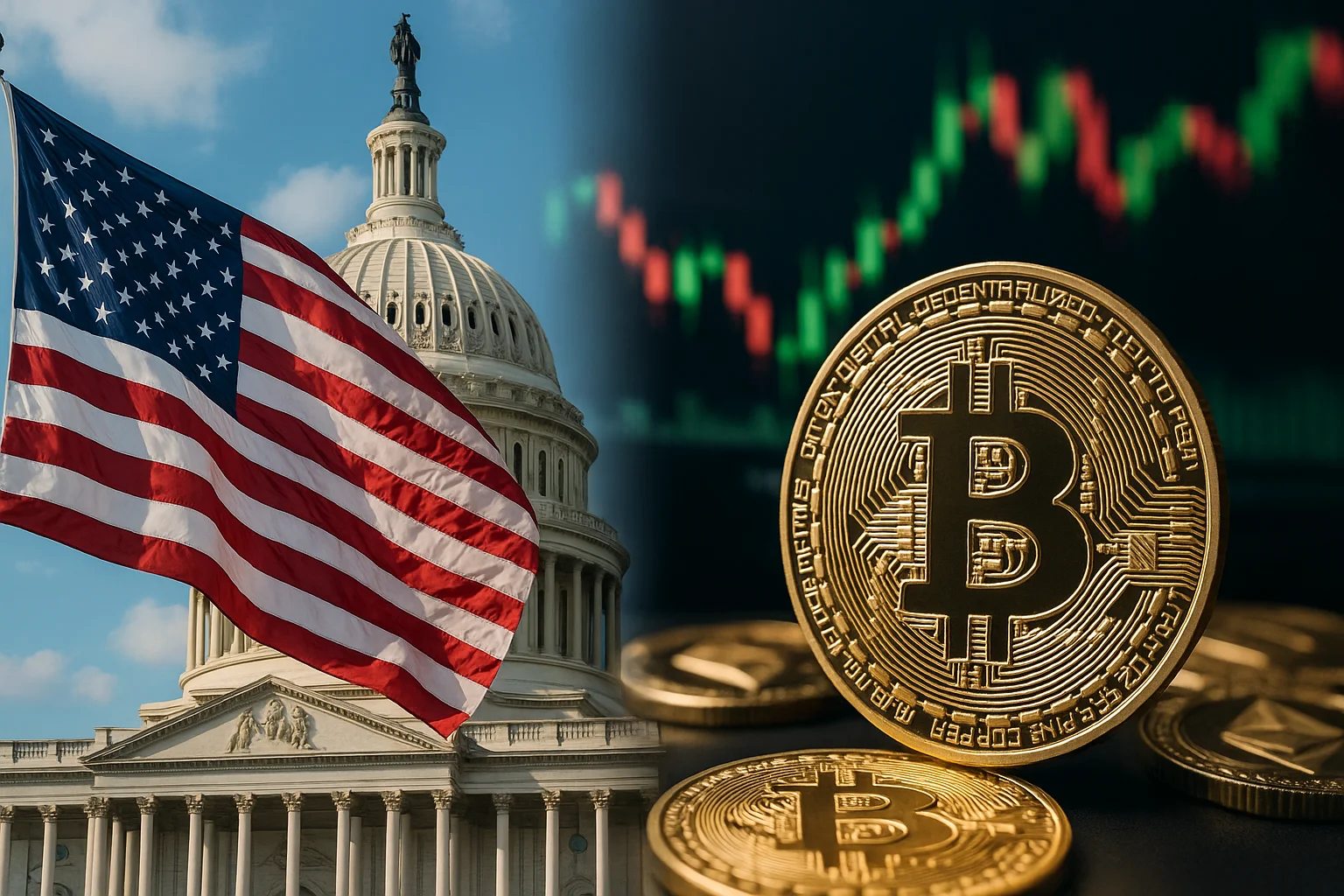
Is the US Government Opening? Bitcoin Surpasses $106,000
Positive developments regarding the budget package passed by the US Senate have sparked a notable rally in cryptocurrency markets. The uncertainty that had increased in the markets following the 40-day federal government shutdown has eased somewhat as the package progresses toward approval.First and foremost is data. Bitcoin rose approximately 2% in 24 hours, trading near $106,000. Ethereum rose approximately 7.8% to $3,632. XRP gained 8.4%, Binance Coin 3.7%, and Solana 7.8%. The Senate made progress on the disagreements that led to the government shutdownThe primary reason behind this rise is that the budget package, which passed the Senate with a 60-40 vote, is perceived by markets as a signal that the threat is disappearing. If enacted, it will allow for the reopening of closed institutions, the payment of government salaries, and the economy to operate at full capacity again. It's not surprising that the markets reacted in this direction. Some prominent comments in market analyses include: Peter Chung, research director at Presto Research, stated, “The prolonged lockdown has drained liquidity from overnight loans and increased anxiety in the markets. Once this burden is lifted, risk assets can be directed.” Similarly, Vincent Liu, chief investment officer at Kronos Research, said, “The decline in macro uncertainty and policy optimism have increased buying appetite in the crypto market.”Furthermore, the government reopening not only boosts market morale for the day but also normalizes economic data flow, supporting the policy decision-making process of institutions like the Federal Reserve. For example, BTSE COO Jeff Mei summarized this situation by saying, “Economic indicators will return to normal, and stimulus measures may become more visible from now on.” Furthermore, Nick Ruck, director of LVRG Research, emphasized that risk assets, including crypto, have gained momentum as the dollar index's momentum stalled and liquidity increased. Considering the crypto market movement in a broader context: As Asian markets opened, US stock futures rose, and the previous pressure on the dollar/currency front partially eased. Under these circumstances, Bitcoin and other leading digital assets re-confirmed their position in the "risky asset" category. A technically upward trend has formed in the market in the short term.However, an important side note: The Senate decision is not yet final. After receiving approval from the House of Representatives, the bill will be sent to the President for consideration for signature. Any disruption could resurface uncertainty, potentially exacerbating market turmoil. In this context, indicators investors should closely monitor include fund flows (especially ETFs focused on crypto), Bitcoin's dominance rates, and whether altcoins will join this rally.
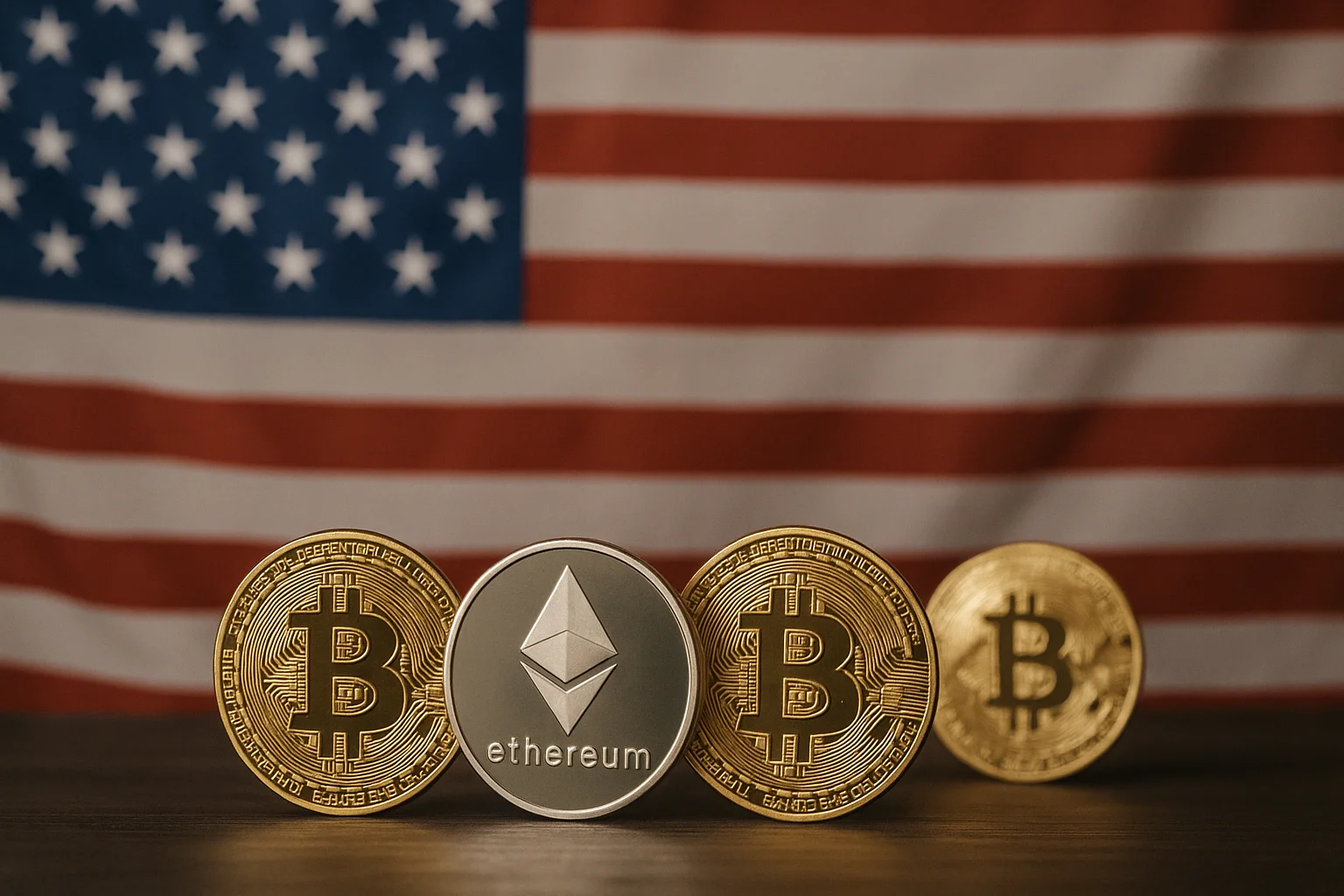
Trump's Crypto Statement: "We've Ended the War"
All eyes are once again on the US in the crypto markets. President Donald Trump delivered a strong message of support for the cryptocurrency industry during his speech at the America Business Forum in Miami. Sharing his vision for the future of Bitcoin and digital assets, Trump emphasized that America should not lag behind in this area and declared that the "crypto war is over."Donald Trump makes a statement on cryptocurrencyAt an event held in Florida on November 5, 2025, as part of the America Business Forum, Donald J. Trump asserted that the US will be the leading country in the cryptocurrency space. He declared, "We are making America the Bitcoin superpower and the crypto capital of the world."In his speech, he claimed that the federal "war" on the cryptocurrency sector is over. He stated, "Crypto was under pressure, but it's not anymore," and presented a new vision. However, this vision did not include concrete timelines or new institutional directions.Trump suggested that digital assets could play a significant role not only in the technology field but also in the financial sphere. He stated that cryptocurrencies reduce pressure on the dollar and could benefit the US in terms of currency sovereignty. He used the phrase, "It alleviates pressure on the dollar."He also warned that rival countries like China could use the crypto sector to their advantage, emphasizing that the US should take an active role in this area. "If it's not done right, this is a major industry, and China is about to start," he said.Government steps are also progressing, albeit slowly, in line with the vision outlined in Trump's speech. Earlier this year, there were signs of the establishment of federal structures such as the "Strategic Bitcoin Reserve" and the "Digital Asset Stockpile" in the US; however, Bitcoin purchases have not yet materialized.Furthermore, the GENIUS Act, signed in July 2025, laid the groundwork for a regulatory framework for stablecoins. However, the market structure and comprehensive regulations are not yet fully established.Why did Trump emphasize crypto?Trump's emphasis on crypto did not emerge overnight. Previous administrations' regulatory crackdown on crypto and the general atmosphere of uncertainty had led to a lack of confidence in the sector. Trump described this situation as a "war," suggesting that this perception had been reversed. He also emphasized the crypto sector's size and support from the business community: "It's a big industry. There are a lot of businesspeople... they were in other businesses, but crypto is also involved," he said. This statement aims to demonstrate that crypto goes beyond being a mere investment tool and offers the potential to create economic growth and jobs.
